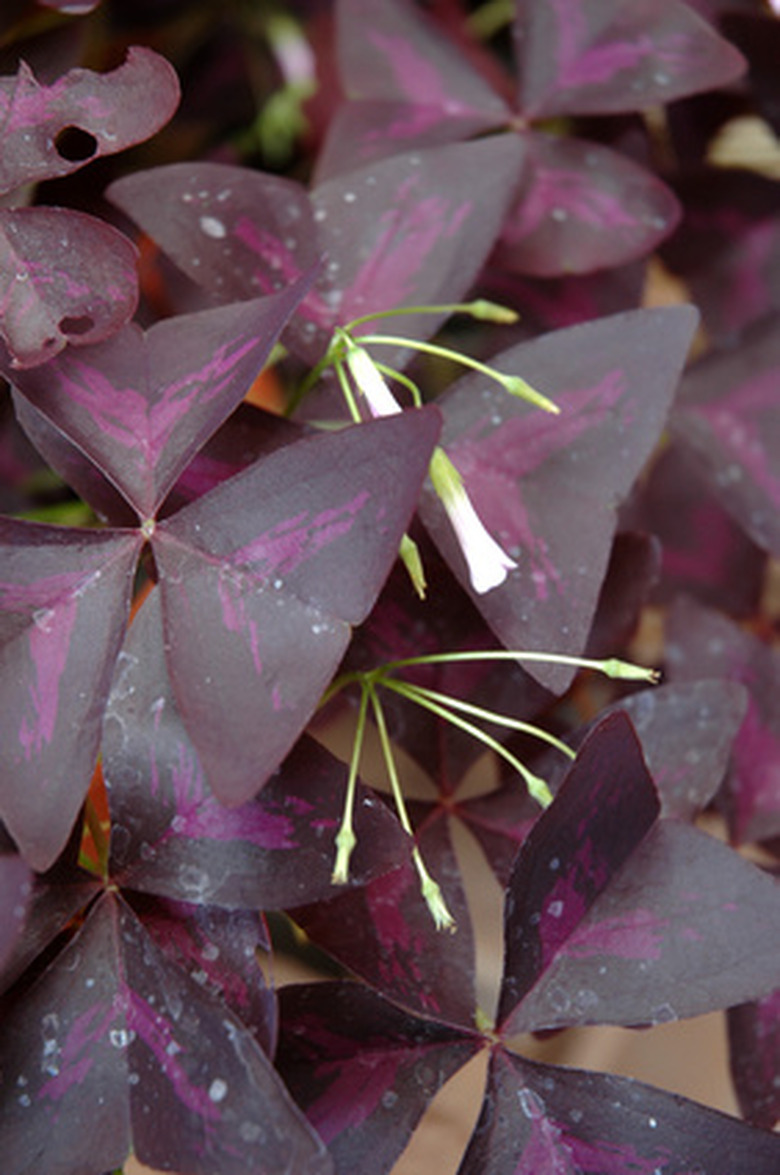Purple Leaf Identification
The term "purple" is relative when it comes to foliage identification. Purple can have bronze overtones, as in the leaves of some trees. It can be nearly black, as it is in some sedum leaves. It can have red highlights. Whatever the shade of purple, the color has gained popularity among gardeners over the last 10 to 15 years. Some plants, like the copper beech (Fagus sylvatica) sport foliage that is naturally purple at some point in the annual growth cycle. Other plants have been specially bred for continuous darker foliage or stem color.
- The term "purple" is relative when it comes to foliage identification.
- Other plants have been specially bred for continuous darker foliage or stem color.
Trees With Purple Foliage
Identifying trees with purple foliage can be made easier with the knowledge that purple-leaf varieties generally have the same leaf configuration and size as green-leafed varieties of the same species. This is true of Cercis canadensis, known as Forest Pansy, which has the same heart-shaped leaves as other Cercis or redbud varieties. Japanese maples (Acer palmatum) like Atropurpureum and Bloodgood have the same palmate leaves with sharply pointed lobe ends as other palmatum varieties.
Shrubs and Grasses With Purple Foliage
Many popular shrubs come in purple-leafed varieties. A notable example is barberry, always distinguishable by its small, elliptical leaves, sharp prickles and yellow wood. If you spot a small, rounded barberry with crimson foliage, it is very likely the Crimson Pygmy variety. Barberry is unmistakable, no matter whether the leaves are purple or green. Prunus x cistena or purple sand cherry has distinctive, elliptical-toothed leaves and an upright, spreading growth habit. Purple is not as common among grasses, but Ophiopogon planescapens, known as Nigrescens, is distinctive, with purple-black foliage that reaches 1 foot in height.
- Identifying trees with purple foliage can be made easier with the knowledge that purple-leaf varieties generally have the same leaf configuration and size as green-leafed varieties of the same species.
- This is true of Cercis canadensis, known as Forest Pansy, which has the same heart-shaped leaves as other Cercis or redbud varieties.
Purple-Leafed Perennials
Succulent plants with fleshy, dark purple leaves, thick stems, and branched, flat flower heads are most likely sedum. One example is the Black Jack sedum, which sports pink flower heads. Another increasingly common purple-leafed plant is heuchera. The lobed, sometimes ruffled leaves of this shade-lover can be dark or somewhat lighter purple. It is a low grower. Ajuga reptans, characterized by scalloped leaves and a ground-hugging habit, is also available with purple-black leaves. One common cultivar is Back Scallop.
- Succulent plants with fleshy, dark purple leaves, thick stems, and branched, flat flower heads are most likely sedum.
- Another increasingly common purple-leafed plant is heuchera.
Purple-Leafed Annuals
Probably the most common purple-leafed annuals are members of the large mint family. Mints are always distinguished by stems that appear square, and the leaves are frequently aromatic. Basil lovers will find it easy to recognize purple basil, with its characteristic scent and elongated purple leaves. Perilla frutescens looks very much like purple basil, except that its scent is more fruity and its growth habit taller—2 feet or more. Some of the many varieties of coleus (Solanostem) also feature purple foliage, including Inky Fingers, with deeply dissected leaves.
Using Purple-Leafed Plants
Purple-leafed plants offer a great contrast to specimens with green leaves. This is especially true when the purple-leafed varieties are paired with those having light green or chartreuse foliage, such as with a combination of purple-leafed and green-leafed sweet potato vines. Purple leaves make orange or bright yellow flowers stand out, but they also combine well with blue or pink flowers.
- Probably the most common purple-leafed annuals are members of the large mint family.
- Some of the many varieties of coleus (Solanostem) also feature purple foliage, including Inky Fingers, with deeply dissected leaves.
References
- "Manual of Woody Landscape Plants," Michael A. Dirr; 1998
- Iowa State University Extension: Horticulture and Home Pest News: A Passion for Purple
- Heritage Perennials: Heritage Perennial Profile: Sedum 'Black Jack'
- Heritage Pernnials: Design Tips
